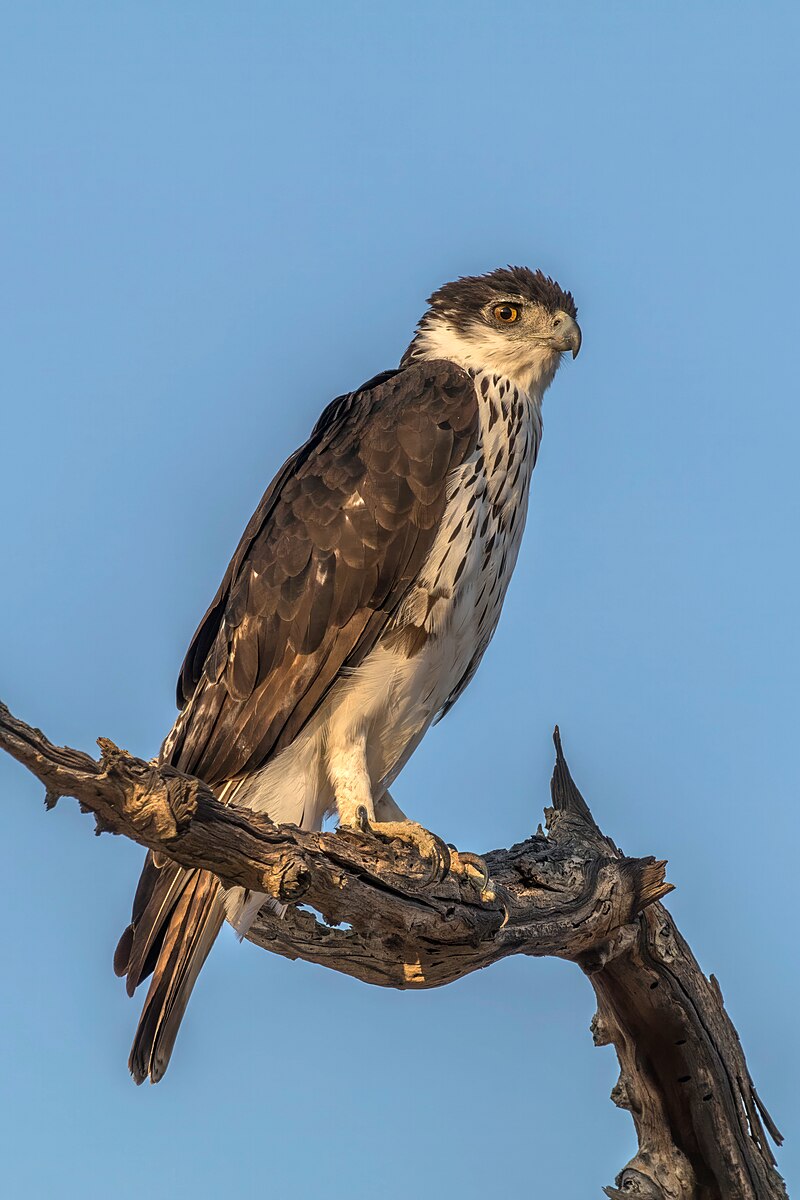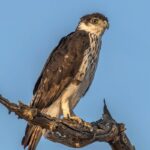The African Hawk Eagle (Aquila spilogaster) is a powerful bird of prey found across sub-Saharan Africa. These majestic raptors have a unique breeding and migration pattern that varies depending on their geographic location.
Breeding Season and Nesting Habits
The breeding season for African Hawk Eagles differs across their range:
- Northern Equator: The breeding season occurs from October to April.
- The Gambia: The breeding season is typically from February to June.
- East Africa: The nesting season often extends from April to January, with egg-laying peaking between September and November.
- Uganda: Egg-laying has been reported from September to November, with juvenile birds observed by January.
- Southern Africa: The nesting season is more variable, recorded from April to October, with egg-laying peaking in June.
African Hawk Eagles build their nests on top of tall structures, such as the canopy of trees or man-made structures like pylons. These nests are built to last, with some lasting for up to 60 years. The parents share the responsibility of incubating the eggs, which typically take around 43 days to hatch.
Flight Characteristics
 Image source: African hawk-eagle by Charles J. Sharp
Image source: African hawk-eagle by Charles J. Sharp
In flight, the African Hawk Eagle appears as a mid-sized raptor with a relatively small but well-protruding head, a longish tail, and wings that are neither particularly long nor broad. They tend to fly with powerful and shallow wing beats, and when gliding or soaring, their wings are well-spread with the carpal points only slightly forward pressed.
The adult African Hawk Eagle’s distinctive plumage features a significant pale whitish-grey window on the base of their primaries, extending into dark grey panels across the black-tipped secondaries. The grey tail usually only shows obscure bars from a distance, with a broad subterminal band. From below, the black trailing edges with contrasting greyish-white flight feathers and the more apparent subterminal band are distinctly abutted by paler grey feathering.
Juvenile African Hawk Eagles have a different appearance, with a contrasting creamy window on the wings and a barred tail as the most distinct features when seen from above. From below, they show rufous wing linings that match the forebody and varying dusky edges, which often form carpal arcs and sometimes continue as wing diagonals.
Territorial Behavior and Aggression
African Hawk Eagles are not typically aggressive towards humans, but they can be highly territorial, especially when protecting their nests and young. They have sharp talons and an equally sharp, hooked beak, which they use to catch and kill their prey, before tearing it up into bite-sized portions for themselves and their young.
In terms of territorial displays, African Hawk Eagles engage in aerial displays, which are fairly uninvolved compared to some related species. The displays usually involve mutual circling with intermittent calling, but males sometimes engage in sky dances, which involve relatively shallow undulations with steep plunges and short rises with little wing flapping. During the sky dance, the male may dive towards the female, and the female, in turn, turns to the male and displays her claws.
Conclusion
The African Hawk Eagle is a fascinating raptor with a unique breeding and migration pattern that varies across its range in sub-Saharan Africa. These powerful birds of prey are known for their impressive flight characteristics, territorial behavior, and parental care. Understanding the nuances of their seasonal movements and nesting habits is crucial for their conservation and the preservation of the ecosystems they inhabit.
References:
– Carnivora.net – African Hawk Eagle (Aquila spilogaster)
– Animalia.bio – African Hawk Eagle
– Wikipedia – African Hawk-eagle
– eBird – African Hawk Eagle
– Operation Migration – African Hawk Eagle: The Ultimate Guide

